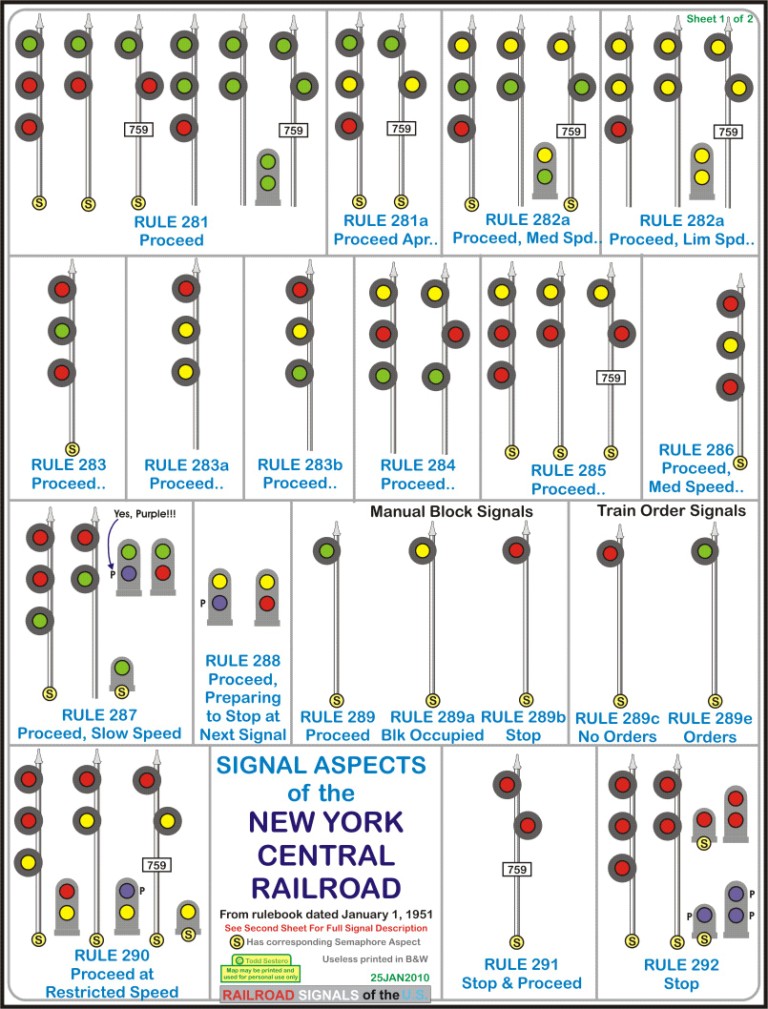

These would be the basic automatic block indications, The bottom signal head would capable of displaying the same aspects as above,except stop, plus the opposite diagional. The Top, would be capable of displaying clear (3 lights verticle) Stop (3 lights horizontal) or Approach (3 lights diagional right high, center, and left low). Using the PRR PL Signals, there would never be more than two signal heads. Am I reading it right?Īlso Here's a post from another forum. A single head or 2 heads at most look like they would cover everything. Reading here and on the links I see that my original post of needing 3 heads would be incorrect since the charts and rules don't call for them. "Stop on the pot John." and John would reply "stop on the pot". Now a switchtender would line you out or in to the yard or passenger terminal and this would be under flag orders which was green-this insured the crew the the switches was is lined for your move and this would be done under restricted speed.If the switchtender displayed a yellow flag that would tell you that you wasn't lined onto the main by the tower operator- a lot of times we would be held at the towerman's signal for a conflicting move.This could be a dwarf signal-these was also known in PRR speak as "pots". We would get a form 19 authorizing us to crossover and run(say)the Westbound main between mile posts and that would usually be under restricted speed but,a 19 would not be needed to take a diverging route through a junction switch or into a passing siding since these was under signal rules. PRR did use a diverging signal aspects-I long forgotten the rules but,know these was used at junctions and for passing sidings. If the superior train receives an approach signal before you are clear of the main then that crew could report a delay due to slow traffic ahead that should have cleared before the signal changed. If your orders were to take a siding at a particular place for clearance of a superior train it would be better to stop and switch tracks before the signal reads approach. If for some reason a train was lined into the wrong track according to the orders given the train was required to stop and the front and rear brakemen would be whistled to provide protection while the conductor or engineer called dispatch at the nearest call box. The signal being clear or proceed would indicate track speed of 50 for freight and 60 for passenger/ superior trains but there could be restrictions not indicated by signals. A given signal could display a clear signal but carry a speed restriction in a given area. Train orders always supersede signal aspects. Read the links I posted and you can understand what the aspects displayed would indicate. This was up to the engineers judgement on how fast the train could go on approach. Approach speed would be nothing faster than a safe stopping distance within line of site. Stop approach would be indicated if there were oncoming traffic on the same line. Slow approach would be indicated if the train was switching tracks or there were traffic ahead. The signal aspects would tell the crew what the best speed would be for that particular block or interlocking.

Most of the time the turnouts were lined for them by a nearby interlocking machine when it came to mainline running. This order would have the time and position/track they were to operate on. When switching tracks the crew would follow the specific written order handed to them. The signals would not indicate what direction the turnout is lined for.

Here are three links that should get you started.ĮDIT: I just found this page which may be what you are looking for. Sometimes you will have to make compromises because our model railroads can not cover the scale track spacing that the prototype would. Also, you need to think about how many aspects your hardware can display on the model signal. This is going to take some amount of research. Next, you need to clarify the meanings of the terms used for the signal aspect shown, and what track arrangement the signal was used for. The first thing to do is find a PRR rule book or some reference that shows the variations of PRR signals. Medium clear can mean different things for different railroads. What for instance does medium clear mean?" "I think this is where I'm not understanding.


 0 kommentar(er)
0 kommentar(er)
